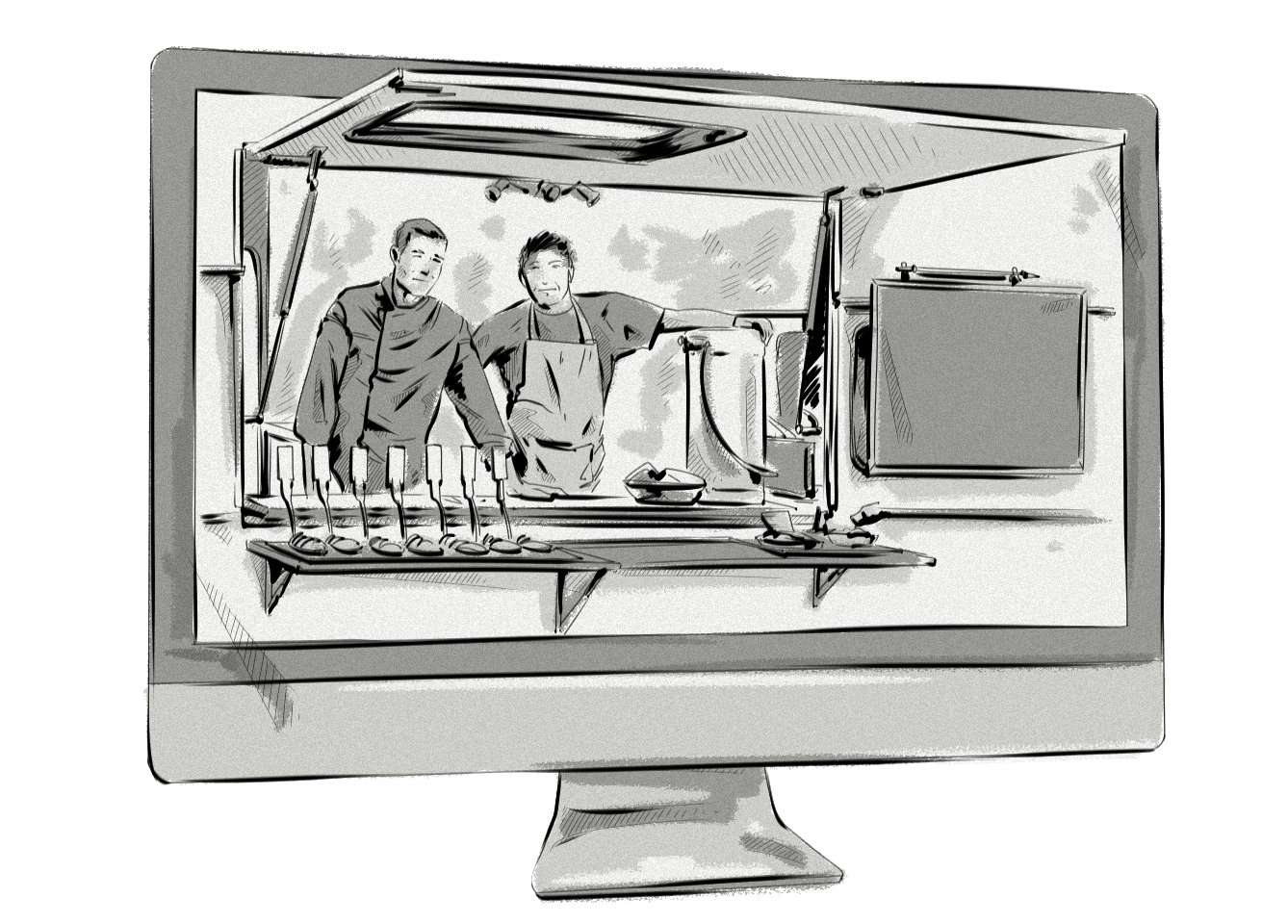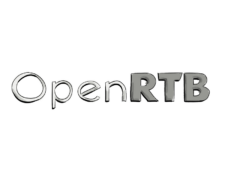The online advertising industry is populated by an array of media-buying methods, making it increasingly difficult to comprehend, even for the most seasoned marketers. While terms like programmatic direct, real-time bidding (RTB), and private marketplace (PMP) all fall under the programmatic umbrella, it is worth remembering that they are quite different concepts.
Before going deeper into the inner workings of RTB, programmatic direct, and PMP and discussing the differences between them, let’s clarify what the term programmatic means in the first place.
What is Programmatic?
There is no industry-wide consensus as for the term’s definition, but it’s fairly safe to say programmatic refers to the use of various technology, algorithms, and user data to quickly and efficiently automate the process of buying and selling of online media.
Programmatic is a concept opposite of traditional manual-insertion orders, whereby advertisers would contact publishers directly to purchase ad space, online or otherwise. This is also known as manual media buying.

Manual Media-Buying
In the early days of online advertising, the traditional process of manual media buying involved the following steps:
- Campaign and creatives were set up and placed in the advertiser’s ad server.
- Ad codes were delivered to the publisher (e.g. via email).
- The Ad Ops team on the publisher’s side placed the codes in the publisher’s ad server.
- The campaign started.
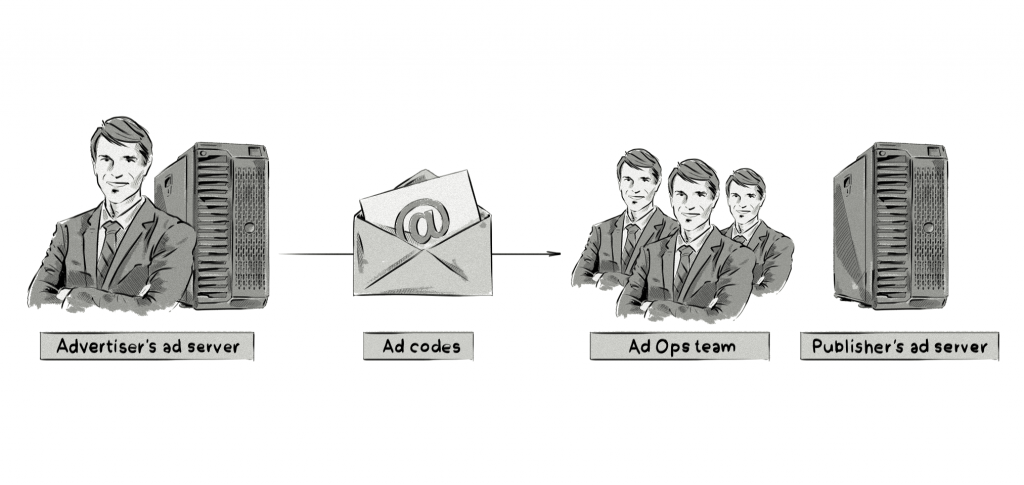
Manual media-buying is relatively inefficient, offers limited scalability, and doesn’t allow advertisers or publishers to test and conveniently adjust their campaigns on the fly. This is because all changes to the campaign had to go through publisher’s Ad Ops (online advertising operations) and involved an array of time-consuming, manual changes to be made in the ad server.
These inefficiencies with manual media-buying lead to the emergence of programmatic media-buying.
We Can Help You Build a Header Bidding Solution
Our AdTech development teams can work with you to design, build, and maintain a custom-built header bidding solution for any programmatic advertising channel.
Programmatic Media-Buying
Programmatic technology was implemented in mid-90s and although it is a bit more complex, it offered a completely automated and efficient media-buying process. The technology allowed both advertisers and publishers to minimize human interaction, and thus vastly reduced the time it took to set up, run, and optimize media campaigns.
Here’s a look at how a typical programmatic media-buying process could be executed:
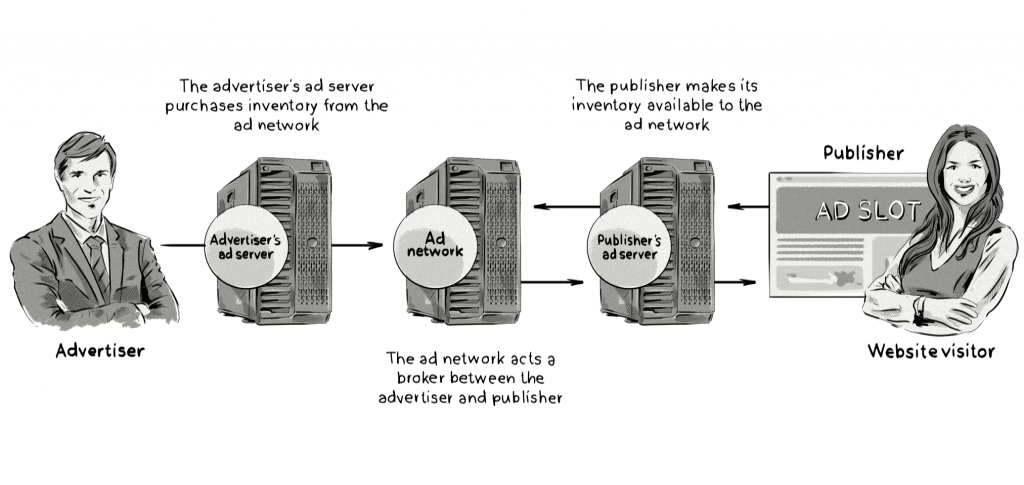
- An advertiser (such as a brand) hires an advertising agency to run campaigns on its behalf. The agency contacts an agency trading desk.
- The trading desk uses a demand-side platform (DSP) to manage the campaign.
- The DSP connects to an ad exchange (DoubleClick, AppNexus, Rubicon project, PubMatic, etc.), which combines inventory from ad networks and supply-side platforms (SSPs) with third-party data from a data-management platform (DMP) or data broker.
- Each time an ad space on a publisher’s site becomes available, the ad exchange holds an auction whereby the DSP bids on the impression submitted by the ad network or SSP.
- If the DSP wins the bid, the advertiser’s ad is passed on to the publisher and displayed to the visitor.
Manual vs programmatic
One of the key differences between manual and programmatic media-purchasing processes is the speed and convenience of launching and modifying each campaign, even when it’s already running.
Tasks that would take minutes, or even hours, to complete with manual media-buying take just milliseconds with programmatic media-buying.
With programmatic, starting a campaign requires signing an insertion order, setting up the campaign on the advertiser’s and publisher’s ad servers, trafficking tags, etc. Starting the campaign on a DSP (once the creatives are ready) is a matter of minutes. Any changes to the campaign made by Ad Ops in the demand-side platform are reflected almost in real-time.
The same tasks would take hours or days in non-programmatic campaigns.
This automation and fast execution offered by programmatic media-buying allows brands to react quickly to changes and make real-time optimizations to campaigns.
As mentioned above, the term programmatic covers a range of media-buying models, including RTB, private marketplace and programmatic direct.
Here’s a look at how they work and what separates them from one another.
Real-Time Bidding (RTB)
RTB is the most popular way of buying online media programmatically, allowing billions of ads to be served to Internet users on a daily basis.
It is an auction-based bidding protocol in which advertisers compete against each other to display ads to specific users. RTB offers a lot of capabilities and use of data, vast types of inventory, and is universally considered the most flexible model on the market.
DSPs can implement proprietary algorithms for custom bidding and targeting strategies utilizing AI and machine learning. Some platforms, such as AppNexus, give this possibility even to end customers (advertisers) through programmable bidders, for example.
RTB auctions are completely automated and are governed by various auction mechanics, with the ads targeted based on users’ cookies.
Real-time bidding was introduced in the late 2000s at a time when ad networks were suffering from either underfilling or overfilling.
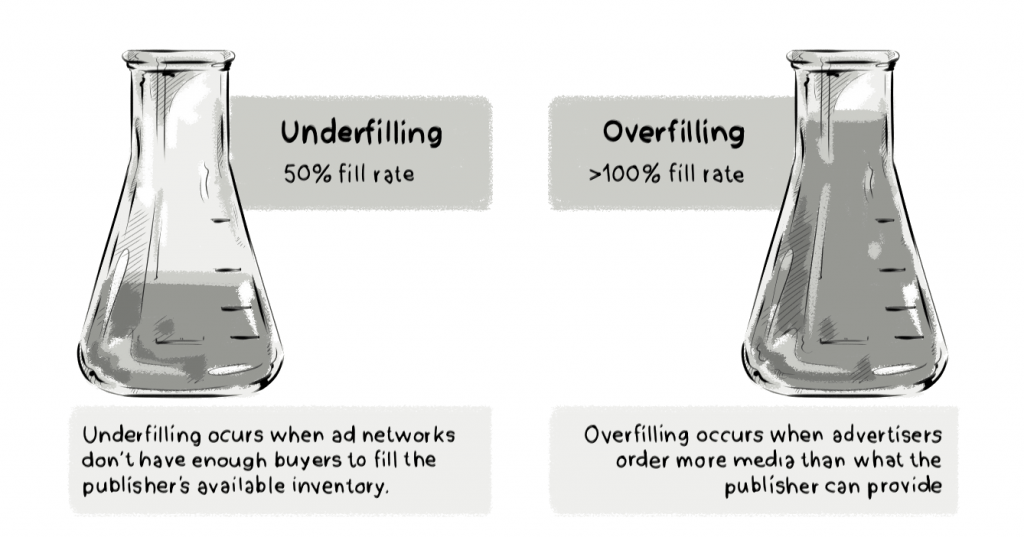
This is where RTB emerged as a way to control the fill rate of a publisher’s inventory by using real-time auctions to trade remnant (unsold) inventory and dynamically balance publishers’ supply and demand.
While there are many AdTech platforms involved in an RTB media transaction, there are three platforms in particular that play a key role in the process: a demand-side platform (DSP), an ad exchange, and a supply-side platform (SSP).
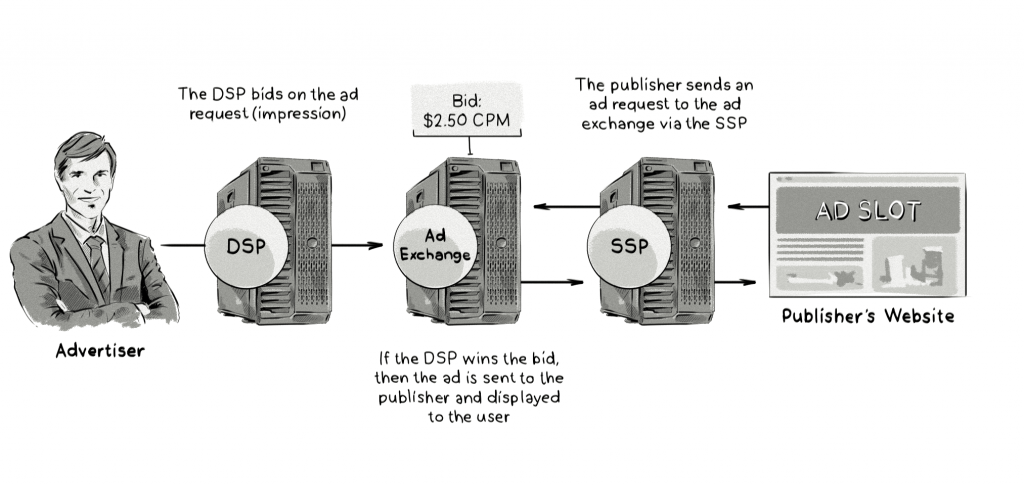
We’ve written a lot about RTB in other posts on our blog, so you can read them if you need a quick primer to get up to speed.
The Benefits of RTB
- Per-impression buying process. Real-time bidding allows brands to bid on individual impressions rather than agreeing to a predetermined fixed price. Buying in real time is cost-effective, reduces waste, and can prevent advertisers from overpaying for media.
- Advertisers and publishers use a single dashboard on their DSP or SSP to control their campaigns, rather than having multiple relationships with different partners.
- Easy testing and adjusting. The impression-level data obtained allows advertisers to analyze the efficacy with certain consumers, context, and creative. This can ultimately lead to a more adaptable strategy.
- Insights. Publishers have real-time information about their best-performing segments and know which inventory is most coveted by advertisers.
- Ability to sell remnant ad space. As RTB auctions are triggered automatically by the arrival of a target visitor, inventory that was previously unwanted and unsold can always be sold and “saved” from wasting.
Private Marketplace
Private marketplace (programmatic guaranteed, programmatic reserved, automated guaranteed, and the like), or PMP for short, is an invite-only variation of the RTB model.
It is an auction process in which just a handful of advertisers bid against one another to buy a publisher’s inventory. This method is typically offered by publishers with more premium (i.e. coveted and expensive) inventory—think major media sites like Forbes, Wall Street Journal or The New York Times).
Advertisers interested in such inventory can reserve, or guarantee, their ads before the publisher offers them in an RTB marketplace.
In private marketplace deals, there are no middlemen in the form of ad exchanges and SSPs, which allows advertisers to more carefully control and select the websites where they want to display their ads, but the benefits are, in fact, mutual; publishers get paid premium rates for their inventory, and advertisers buying inventory on a PMP get a bonus in the form of preferential access to the publisher’s inventory before it’s sold in public auctions.
Unlike traditional RTB auctions where the advertisers know little about the media buy (e.g. ad placement), PMPs provide both advertisers and publishers with transparency around ad placement and even pricing.
Benefits of Private Marketplace
- Transparency on purchased inventory and pricing: The publisher and advertiser both have a very clear idea of what kind of inventory they are buying, what CPM needs to be paid, and the type of creatives that are being displayed to users.
- Programmatic efficiency: Advertisers are able to quickly and effectively set new buys live on top-tier websites or even packages of inventory on specific segmented verticals.
- Becoming an industry standard: Available on many of the largest programmatic exchanges such as DoubleClick Ad Exchange, AppNexus, MediaOcean, and Kantar Media.
- Can remove the need for a direct-sales team: It can be quite expensive and time-consuming to manage a direct-sales team. PMPs can potentially replace a sales team with technology.
While one might assume that a private marketplace is usually for more premium inventory and open auction is for the cheaper, non-premium, remnant ads, this may not always be true. A private marketplace is just about the way of selling the publisher’s inventory. However, open auction may, in specific cases, offer better yield.
Programmatic Direct
Programmatic direct is a one-to-one media-buying process much akin to the traditional method whereby salespeople met with advertisers in person to strike a deal.
It is a very similar model to the private marketplace, with the exception that advertisers and publishers agree on specific inventory based on a fixed CPM.
The process may require some human interaction; unlike in the case of a private marketplace, publisher’s sales reps may be needed to negotiate deals directly with advertisers. However, the publisher can also set fixed prices, and the advertiser can simply accept or not accept them, without actually negotiating the price. In such case, the experience is just as seamless as in the RTB open auction. Because the CPM is predetermined, there is no bidding process involving other publishers.
The rest of the process (the ad placement) is handled programmatically.

In programmatic direct, the media-buying process looks like this:
- An advertiser browses through a shop-like catalogue of websites.
- They choose placements, and configure flight dates and volume of impressions.
- They configure creatives and additional tracking pixels.
- They place an order on the platform.
- The publisher audits and verifies the campaign.
- The order is executed without additional involvement from the Ad Ops team, except for an audit which they carry out.
Ads sold through programmatic direct are often tied to premium publishers (think Forbes and The Wall Street Journal) who reserve a certain percentage of their inventory they prefer not to sell on the open market because they can demand a premium price from advertisers, who get guaranteed ad space in return.
Because they can still be sold through an API, with little or no direct human involvement, these ads are still considered “programmatic.”

In addition to fixed-price advertising, some publishers (again, those with the most clout and in highest demand) organize private auctions, which gives them greater control both over price and which advertisers they sell to. Advertisers also prefer this model, as they can be surer where their ads will be displayed.
Advantages of Programmatic Direct
- Transparency. The bane of digital advertising has been, and continues to be, transparency. When it comes to the number of ads served and viewed, billions of dollars are wasted due to bot traffic. According to a recent report published by Digiday UK, 81 percent of the programmatic ad impressions in Japan in 2017 were fraudulent, followed by Brazil with 36 percent. The U.S. placed third with 35 percent. In the U.K., which has the third-highest volume of programmatic impressions available, fraudulent desktop impressions were at 15 percent.
It seems that transparency also pays off for publishers; knowing exactly how many impressions are to be served and which creatives should be loaded for which audiences helps optimize their workflow as well and gives publishers greater control over the context and look of their sites.
- Automation. The ability to automate insertion orders and ad-code configuration, and eliminate human error in the entire process.
- Better insights and control. In programmatic direct, publishers have deeper insights into their audiences on premium inventory, can better target optimum buyers, and negotiate prices based on the value of their traffic.
- Directness. Because advertisers don’t have to wait for campaign data to be routed back through a variety of tools, there is greater, more immediate transparency about impressions served and the audiences that viewed them, which makes advertisers happier and therefore more likely to pay a premium price for direct deals.
Summary
It seems like the transition from RTB to PMP to programmatic direct is dictated by many factors, such as the need for transparency, and more precise and guaranteed inventory purchasing. Importantly, it is worth it to emphasize that they are not competing, but complementary models designed to address the different needs of publishers and advertisers.

We Can Help You Build a Header Bidding Solution
Our AdTech development teams can work with you to design, build, and maintain a custom-built header bidding solution for any programmatic advertising channel.
